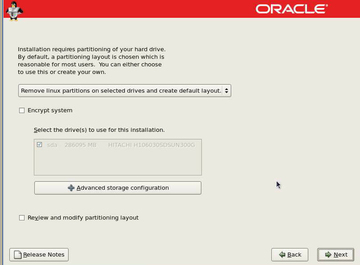Install Esxi Software Raid Debian
What's the best way to migrate a Debian installation to ESXi? I have a Debian web server running on software RAID1 and ideally, I'd like to keep the raid config, provided that it would still make sense to have a raid1 config for a VM. Multiplayer Shooting Games Free Download Full Version. I have seen lot's suggest using vCenter converter, but from my understanding, you cannot use it to install and migrate to ESXi on the same machine. I do have another machine running ESXi, however, it doesn't have the storage to support the data for the webserver, nor would it have the memory required to support it and a heavily used windows domain controller. The only options I see available is to: • go get another hard drive, transfer the content of the webserver to it then format the original drives, install ESXi, reinstall Debian onto a VM, reinstall and reconfigure the webserver, and then transfer the data to the newly created VM. • connect a 3rd drive; install the hypervisor onto it and create the VM to boot off the other two drives (but I am not sure it can work).
Patch No Cd Monster Garage Halloween. Despite the terminology, 'fake RAID' via dmraid is a robust software RAID implementation that offers a solid system to mirror or stripe data across multiple disks with negligible overhead for any modern system. Dmraid is comparable to mdraid (pure Linux software RAID) with the added benefit of being able. Home › General › VMware ESXi on SoftRaid SoyouStart. Get a better machine, or setup a software raid in Debian, then install Proxmox on it. Root on software RAID+LVM. In this example, we use virtual machine (qemu or kvm). We can play, and break them;-). $ sudo apt-get install kvm $ qemu-img create -f qcow2 hda.qcow2 4G Formatting 'hda.qcow2', fmt=qcow2, size=4194304 kB $ qemu-img create -f qcow2 hdb.qcow2 4G Formatting. Sep 08, 2015 ESXi 6 RAID1 support for OS/Datastore. Type 'software raid' kind of. I do not want to install ESXi on a USB stick and use just one of the 240 GB.


I don't have a problem with the first option, provided there's no other way, and it seems like there should be an easier way to do this, plus I have a lot of modified configuration files in here, and finding all of them to back them up would take more time than I have. The second option seems the easiest, but I have a gut feeling it won't work. Is there any other way to achieve this? Using another system to temporarily hold the data really isn't an option for me. Adding an addition harddrive (or just an USB thumb drive), installing ESXi on it and using the existing hard disks in a VM is basically possible with 'Raw Device Mapping'. I'm not going to explain this in detail, it is well documented. That being said, if you use Raw Device Mapping you lose certain benefits from virtualization, for example: • No Snapshots • You can't share the disks with other VMs • You can't migrate your VM easily to a different host when hardware fails Using software RAID on the VM level doesn't make much sense, usually you want to do this on the hypervisor, so all VMs benefit from it.
But you mention that you are using software RAID. You can't configure software RAID on an ESXi server. Either you add a hardware RAID controller to your host, or you use the existing disks as individual datastores. Rent The Musical Songs Free Download. To migrate your existing system you have basically two choices: • Move the data to a spare disk, install ESXi, create a new VM, move the data back to the VM • Use VMware Converter to convert your physical system into a temporary VM in the format used by VMware Workstation or VMware Player. Then, after installing ESXi on the host, use the converter again to convert it into the ESXi VM format. In both cases you need a spare disk with sufficient size. Personally, I'd recommend the first option.